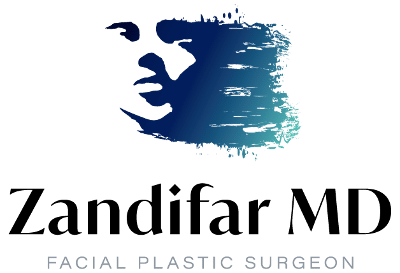Nasal Turbinate Reduction Surgery in Los Angeles, CA
Nasal Turbinate Reduction Surgery in Los Angeles, CA
Nasal turbinate reduction surgery is a specialized procedure aimed at addressing chronic nasal obstruction caused by enlarged or swollen nasal turbinates. The turbinates, also known as nasal conchae, are structures inside the nasal cavity that play a crucial role in humidifying air and regulating airflow. However, when the inferior turbinates or other turbinates become swollen due to conditions like allergies, infections, or chronic swelling, they can obstruct the nasal passages, leading to difficulty breathing, nasal airway obstruction, and other respiratory health challenges.
This guide explores the function of nasal turbinates, the causes of turbinate hypertrophy, the types of turbinate surgery available, and what to expect during the surgical treatment process.
What is Nasal Turbinate Reduction Surgery?
Role of Turbinates in Nasal Function
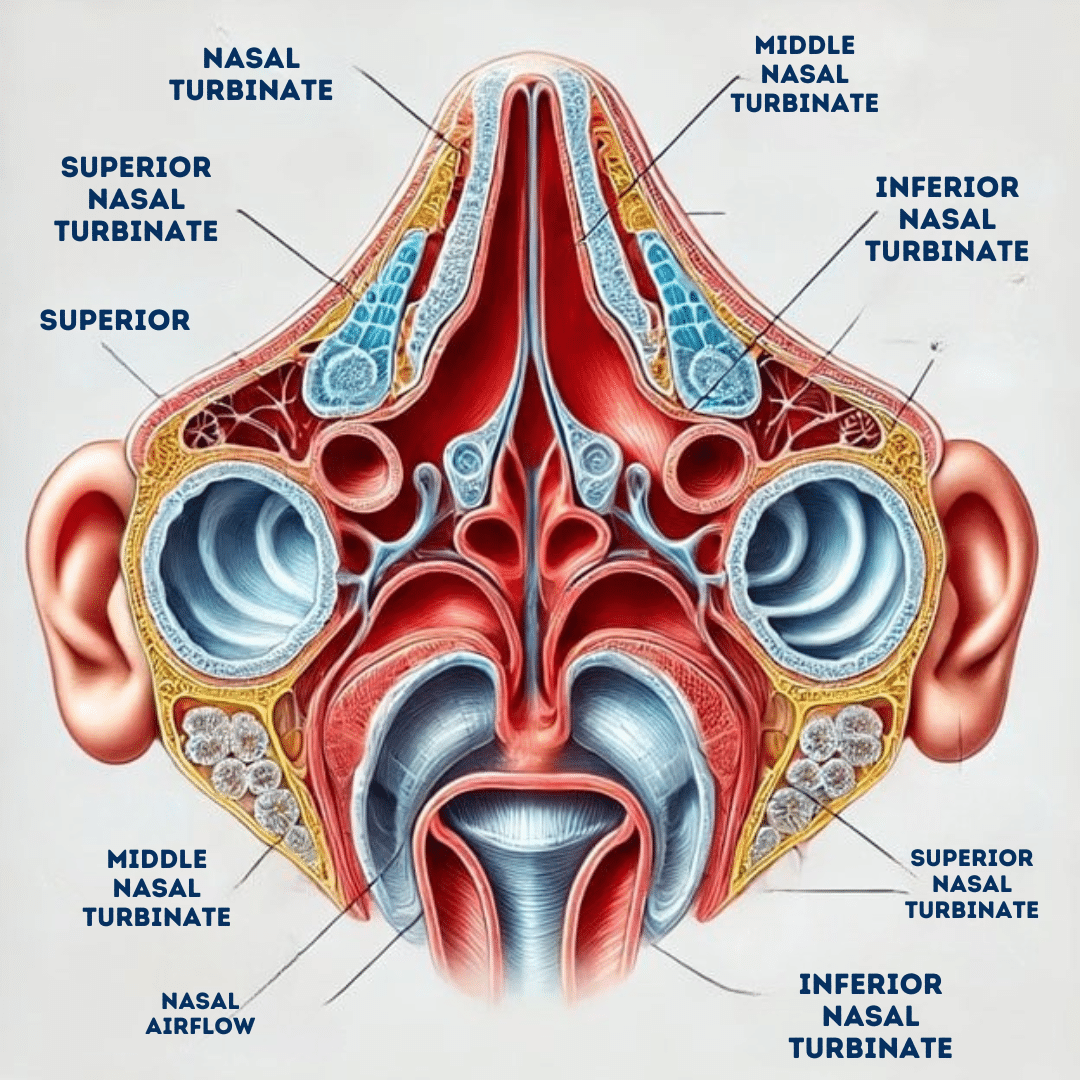
Turbinates are thin, bony structures inside the nasal cavity covered by a mucosal lining. They are classified into three pairs: superior turbinates, middle turbinates, and inferior turbinates. These structures are essential for maintaining healthy nasal airflow by humidifying and filtering the air we breathe. Additionally, they help regulate airflow, ensuring optimal respiratory health.
Causes of Enlarged Turbinates
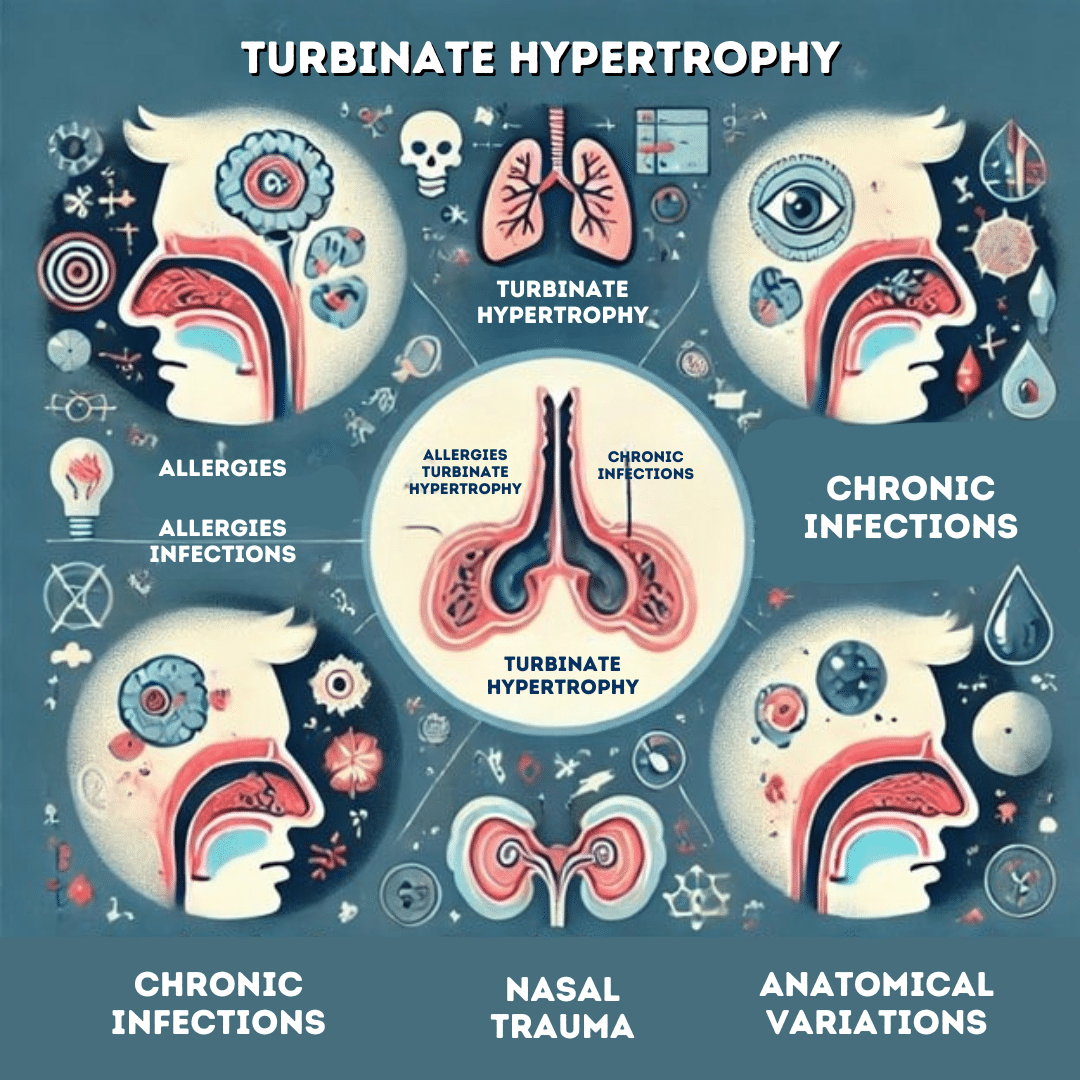
Turbinate hypertrophy occurs due to various factors, including:
- Allergies and Environmental Irritants: Reactions to dust, pollen, or pollutants can cause the turbinates to swell.
- Chronic Swelling from Infections: Repeated sinus infections can lead to persistent inflammation of the nasal conchae.
- Anatomical Variations: Conditions like a deviated nasal septum or concha bullosa (a bony enlargement in the middle turbinate) can exacerbate turbinate swelling.
- Nasal Trauma: Injury to the nose can result in lasting damage to the turbinates and mucosal lining.
When non-surgical treatments such as nasal steroid sprays or oral decongestants fail to provide relief, nasal turbinate reduction surgery becomes a viable option for restoring nasal breathing.
Why is Nasal Turbinate Reduction Surgery Done?
Symptoms of Turbinate Hypertrophy
Enlarged turbinates can cause several disruptive symptoms, including:
- Chronic nasal congestion
- Persistent nasal obstruction
- Difficulty breathing, especially at night
- Reduced nasal airflow
- Recurrent sinus infections
These symptoms can significantly impact daily life and may not improve with nonsurgical treatments like antihistamines or saline irrigation.
When to Consider Surgery
Surgical treatment is recommended when medical management, such as nasal steroid sprays or antihistamines, does not effectively reduce turbinate swelling. Nasal turbinate reduction surgery is particularly beneficial for individuals experiencing:
- Severe nasal obstruction due to inferior turbinate hypertrophy.
- Recurrent infections caused by obstructed nasal passages.
- Difficulty breathing that interferes with sleep or daily activities.
Types of Nasal Turbinate Reduction Surgery
Radiofrequency Ablation
Radiofrequency turbinate reduction uses radiofrequency energy to shrink the soft tissue of the turbinates while preserving the mucosal lining. This minimally invasive procedure is often performed in a health care provider’s office as an outpatient procedure under local anaesthesia. A thin probe delivers controlled energy to reduce turbinate tissue without removing bone. For detailed information, explore endoscopic sinus surgery.
Inferior Turbinate Resection
For patients with severe turbinate hypertrophy, inferior turbinate resection may be necessary. This procedure involves surgically removing portions of the turbinate bone and soft tissue to create more space in the nasal cavity and improve nasal breathing. Unlike radiofrequency ablation, the inferior turbinate reduction is typically performed under general anaesthesia due to the more invasive nature of the surgery.
Coblation-Assisted Reduction
Coblation technology uses controlled plasma energy to reduce turbinate tissue with minimal damage to surrounding structures. This advanced technique is particularly effective for patients with severe nasal airway obstruction and helps minimize scar tissue formation during the healing process.
How is the Procedure Performed?
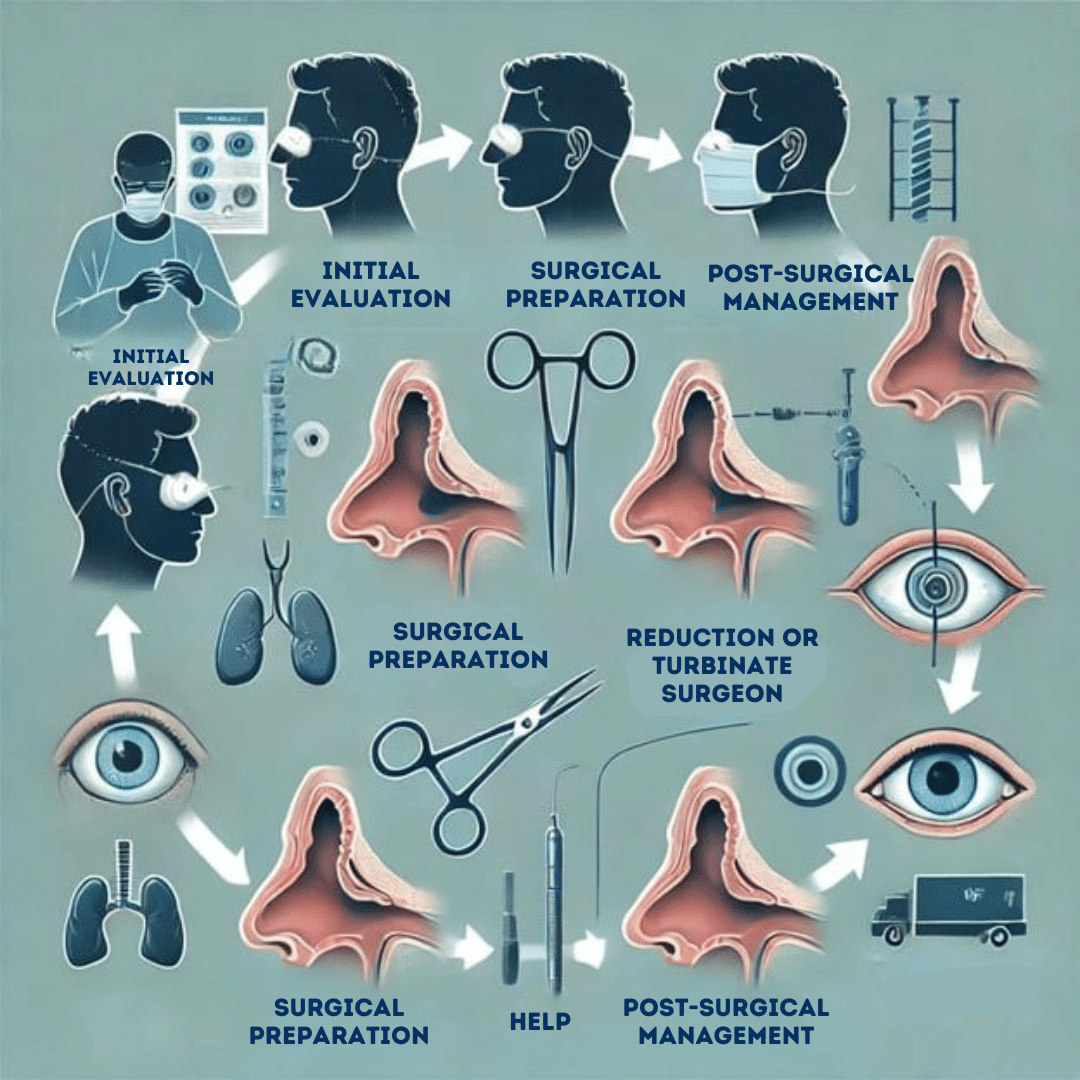
Anesthesia Options
Nasal turbinate reduction surgery can be performed under local anaesthesia or general anaesthesia, depending on the complexity of the case. Local anaesthesia involves numbing the nasal tissue with topical cream and injections, ensuring patient comfort. General anaesthesia is typically reserved for more extensive procedures like turbinate resection, where the removal of bony structures inside the nasal cavity is required.
Surgical Techniques
The specific surgical approach depends on the degree of turbinate hypertrophy and the underlying cause of nasal obstruction. The procedure generally includes the following steps:
- Preparation: A nasal endoscopy may be performed to evaluate the extent of obstruction and plan the surgical treatment.
- Reduction or Resection: The surgeon uses radiofrequency energy, laser technology, or surgical instruments to reduce the size of the inferior turbinates or remove excess bone and turbinate tissue.
- Post-Surgical Management: To prevent complications such as excessive bleeding or infection, the surgeon may apply a medicated dressing or prescribe nasal irrigation.
What to Expect During the Procedure
During turbinate surgery, patient comfort is prioritized. For less invasive procedures, local anesthesia ensures a pain-free experience, while general anesthesia is used for more extensive surgeries. Advanced surgical techniques such as radiofrequency ablation and coblation help minimize trauma to the nasal cavity and mucosal lining, reducing the risk of complications like empty nose syndrome.
Recovery and Post-Operative Care
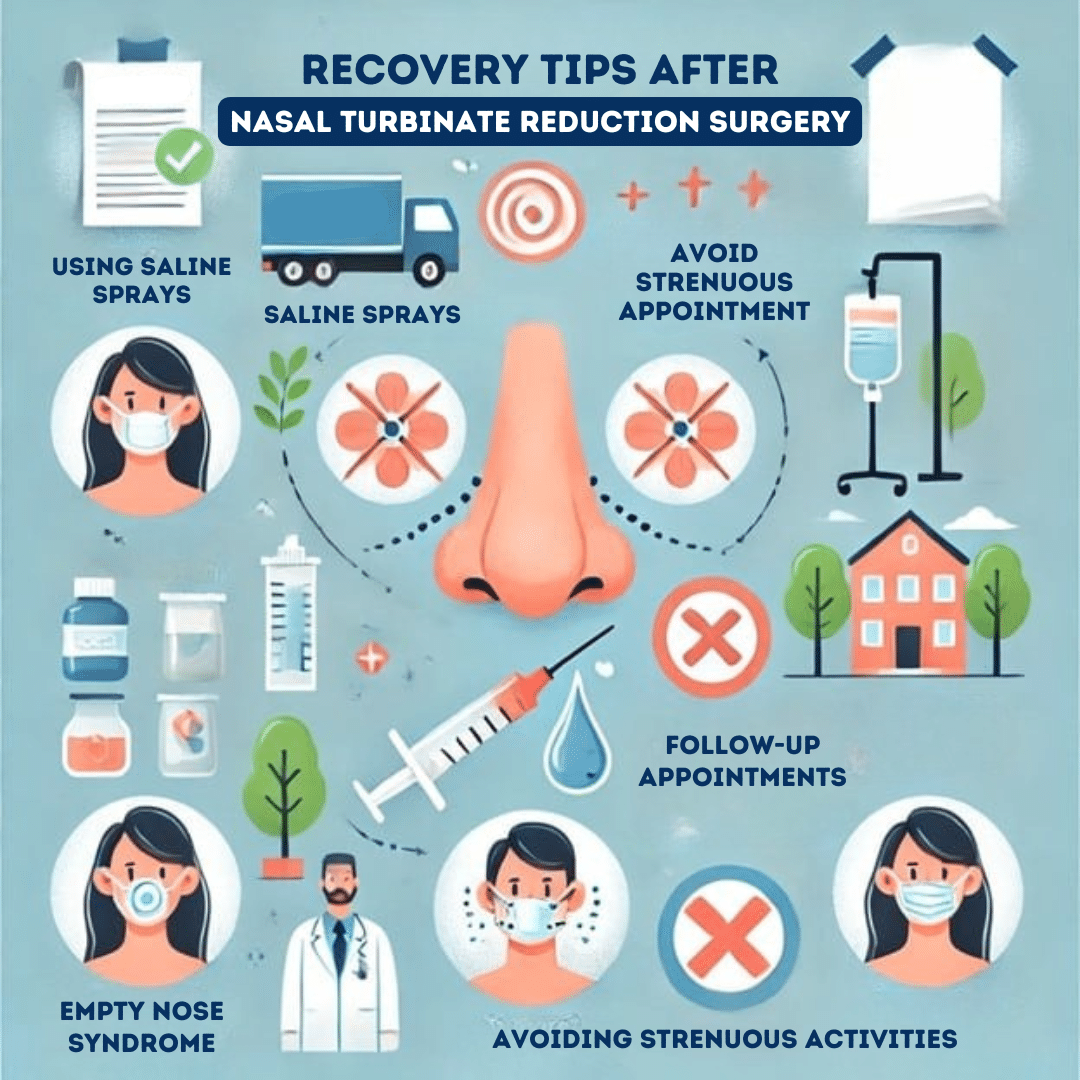
Initial Recovery Timeline
Recovery from nasal turbinate reduction surgery typically takes about one week, though complete healing of the nasal cavity may take longer, depending on the procedure performed. During the initial days following the surgery, patients may experience nasal congestion, crusting, and mild discomfort. These symptoms are a natural part of the healing process as the nasal passages adjust to the reduced turbinate size.
To support recovery, your healthcare provider may recommend using saline irrigation to keep the nasal passages moist and clear of debris. Antibiotic ointments can also be applied to reduce the risk of infection and promote the healing process. Patients undergoing minimally invasive procedures, such as radiofrequency turbinate reduction, often experience faster recovery and can return to normal activities within a few days.
Long-Term Healing Process
As the nasal cavity continues to heal, patients should notice gradual improvements in nasal breathing and airflow. The reduction in nasal obstruction allows for better sleep, improved respiratory health, and a significant decrease in symptoms such as difficulty breathing and chronic nasal congestion. It is essential to follow all post-operative instructions, including avoiding strenuous activities and blowing the nose, to prevent complications such as bleeding or scar tissue formation.
Avoiding Complications
To minimize the risk of complications, including the rare occurrence of empty nose syndrome, patients should attend all follow-up appointments with their healthcare provider. During these visits, the doctor will monitor the healing process, ensure the nasal airway is functioning correctly, and address any concerns about residual turbinate tissue or nasal airflow.
Benefits of Nasal Turbinate Reduction Surgery
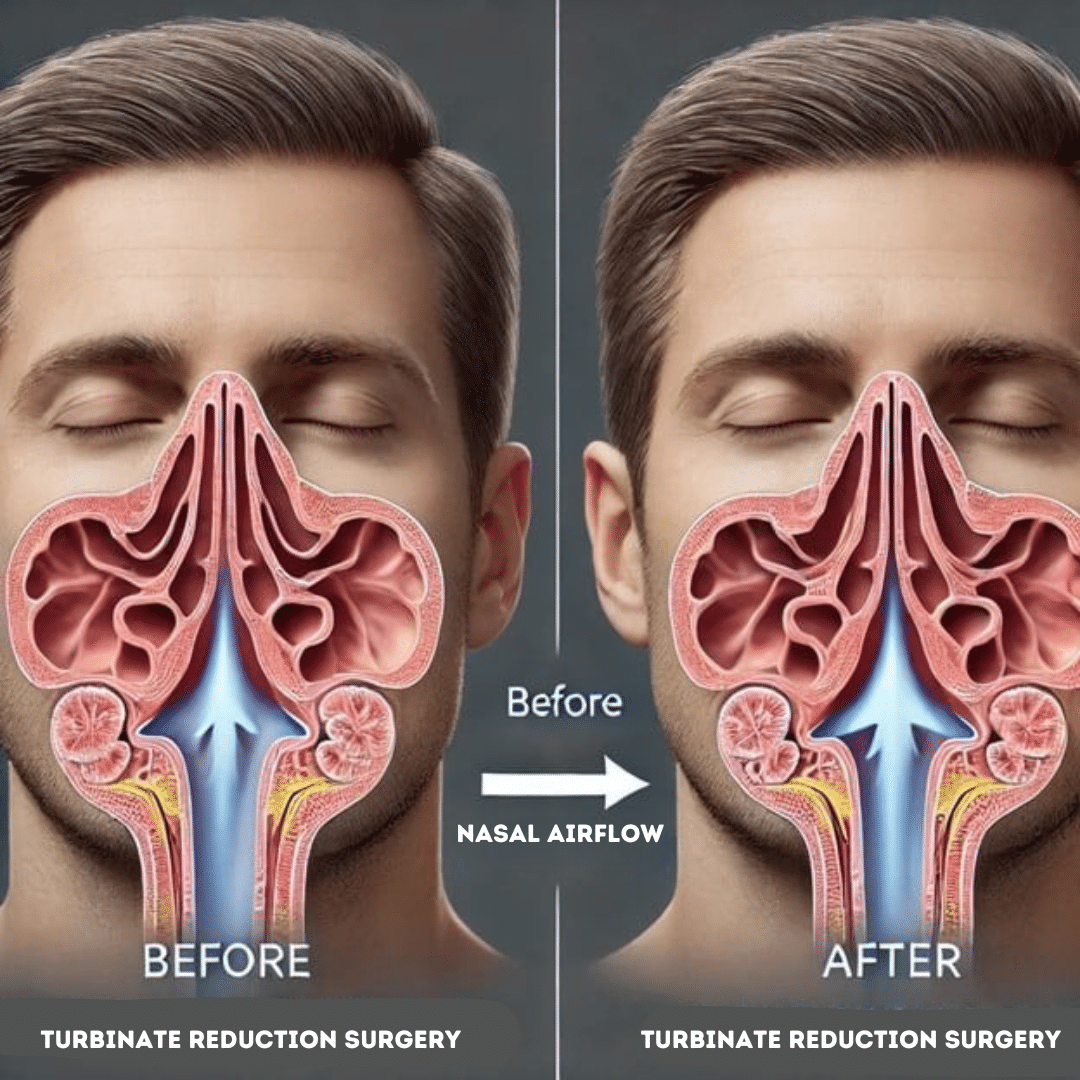
Improved Nasal Breathing
One of the primary benefits of turbinate reduction surgery is the restoration of nasal airflow. By addressing turbinate hypertrophy and reducing the size of the inferior turbinates, the surgery significantly enhances the patient’s ability to breathe freely. This improvement is particularly noticeable during activities like exercise and sleep.
Better Quality of Life
Chronic nasal obstruction can severely impact a person’s daily life. Nasal turbinate reduction surgery alleviates persistent symptoms such as nasal congestion, difficulty breathing, and sinus pressure. Patients often report improved sleep quality, higher energy levels, and an overall enhancement in their quality of life following the procedure.
Reduction in Dependence on Medications
For individuals who have relied on nasal sprays, decongestants, or antihistamines to manage their symptoms, turbinate reduction surgery offers a long-term solution. By treating the root cause of nasal obstruction, the need for continuous medical therapy is significantly reduced.
Risks and Potential Side Effects
Common Side Effects
While nasal turbinate reduction surgery is generally safe, some patients may experience temporary side effects, including:
- Nasal crusting and dryness
- Mild bleeding
- Congestion during the healing phase
These symptoms can typically be managed with saline rinses, nasal ointments, and careful adherence to post-operative care instructions.
Rare Risks
Although rare, some potential risks include infection, excessive bleeding, and the regrowth of turbinate tissue. Empty nose syndrome is another uncommon complication where the nasal passages feel obstructed despite being open. Proper surgical techniques and post-operative care significantly reduce the likelihood of these issues.
Costs and Insurance Coverage
Typical Cost Range
The cost of nasal turbinate reduction surgery varies depending on the type of procedure and the complexity of the case. For minimally invasive treatments like radiofrequency ablation, the cost typically ranges from $2,000 to $3,500. More extensive procedures, such as turbinate resection, may cost between $4,000 and $5,000.
Insurance and Financing Options
When nasal turbinate reduction surgery is deemed medically necessary, such as in cases of chronic nasal obstruction or severe turbinate hypertrophy, insurance providers may cover part of the cost. It is essential to consult with your healthcare provider and insurance company to understand your coverage. Many healthcare providers also offer financing plans to help patients manage out-of-pocket expenses.
FAQs
Is the Surgery Painful?
Most patients find turbinate surgery to be minimally painful. With local or general anaesthesia used during the procedure, discomfort is typically limited to the recovery period and can be managed with over-the-counter pain relievers.
How Long Does Recovery Take?
The initial recovery period lasts about one week, but it may take several weeks for the nasal cavity to heal completely. Patients who undergo less invasive procedures, such as radiofrequency turbinate reduction, often experience quicker recovery times.
What If Turbinates Regrow?
In rare cases, turbinate tissue may regrow after surgery, leading to recurrent nasal obstruction. This possibility is typically discussed with your healthcare provider before the procedure, and strategies such as follow-up care and monitoring can help manage this risk.
Why Choose Dr. Zandifar?
Experience and Expertise
Dr. Hootan Zandifar, a board-certified facial plastic and reconstructive surgeon, specializes in treating nasal airway obstruction and turbinate hypertrophy. With extensive experience in turbinate surgery, including advanced techniques like radiofrequency ablation, he provides personalized care tailored to each patient’s unique needs.
State-of-the-Art Facilities
Dr. Zandifar’s clinics in Beverly Hills and Santa Monica are equipped with cutting-edge technology to perform turbinate reduction surgery efficiently and safely. Whether you need an outpatient procedure or a more comprehensive treatment plan, his facilities ensure optimal patient comfort and outcomes.
Personalized Care Plans
From the initial consultation to post-operative follow-ups, Dr. Zandifar and his team prioritize patient satisfaction. They work closely with each individual to develop a customized treatment plan that addresses their specific symptoms and goals.
Schedule Your Consultation Today
If you are struggling with chronic nasal congestion, nasal obstruction, or difficulty breathing, nasal turbinate reduction surgery may provide the relief you need. Dr. Zandifar’s expertise and state-of-the-art facilities make him a trusted choice for patients in Los Angeles, CA. Contact us today to take the first step toward better breathing and improved quality of life. Call 310-736-4272, visit Zandifar MD, or stop by his Beverly Hills or Santa Monica office to learn more.
A Commitment to Excellence
Hootan Zandifar, MD, FACS, Board Certified Facial Plastic & Reconstructive Surgeon
Schedule Your Consultation
If you seem to have a constantly stuffy nose, and you have difficulty breathing through your nose, contact our office to see if turbinate reduction could help you breathe freely.
Beverly Hills Office
8920 Wilshire Blvd, Suite 604
Beverly Hills, CA 90211
Santa Monica Office
2811 Wilshire Blvd, Suite 640
Santa Monica, CA 90403

